EXHIBITIONS / PROJECTS
MUSEO DE LA ECONOMÍA
POLÍTICA DEL ARTE [Museum of the Political
Economy of Art]
November 9 to January 4, 2013
Henrique Faria (11 x 7 Gallery)
Buenos Aires
|
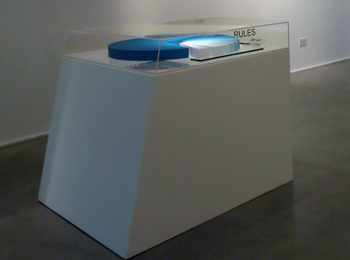
Surplus Value Room: Plus-valía (Surplus-Value),
3-D graph, 110 x 110 x 90 cm, 2012

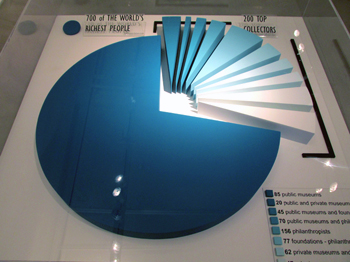

Surplus Value Room, Plus-valía Surplus-Value,
chart on wall,
300 x 110 cm, 2012
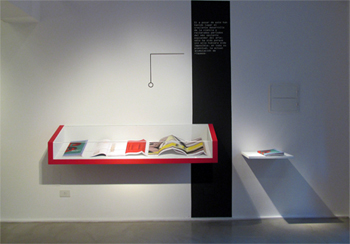
Evidence Room: Errata-Catalogue,
published by Auctions, Market & Money
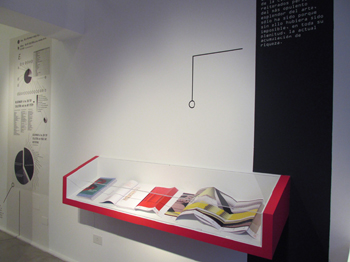

Chronology and sale at Auction's houses
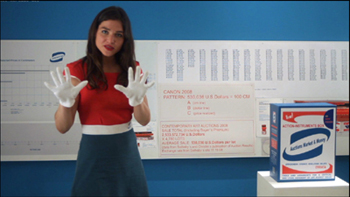
video stills from Action-Instruments
Box presentation
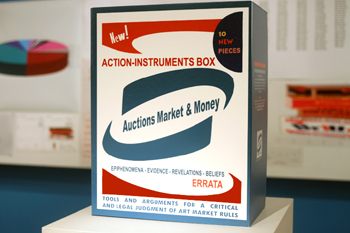
Legality Room: Action-Instruments
Box, multiple
Box with 10 documents, 2011, performative presentation by Vera
Carnevale
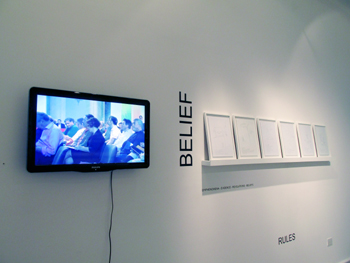 Legality
Room: Suite Auction
Drawings Legality
Room: Suite Auction
Drawings

|

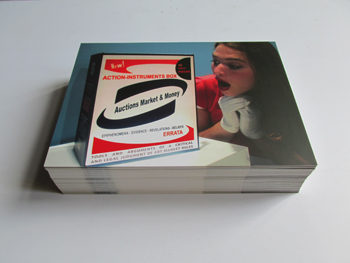
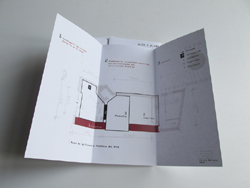
Guide & Plan (spanish)
The museum, as an institution that produces knowledge, which provides a form of truth, their own truth, it can also be supplanted, counterfeited and confronted with itself. Imagining artworks that are simultaneously museums, all orders are disrupted. It is not the museum who legitimizes the creation, but the creative act who establishes the museum. The entire apparatus trembles like a rotten scaffolding, crackle, and even for a second the transposition of roles provokes the doubt: Who is where? Where is how? How is what?. Museos de Artistas by Tomás Ruiz-Rivas, publication VALF, Spain, 2014. With Marcel Duchamp, Marcel Broothaers, Claes Oldenburg, Daniel Spoerri, Alicia Herrero, Giuseppe Campuzano, Tomas Hirschhorn, among others.
Capital On/scenities
Alicia Herrero’s Museo de la Economía Política
del Arte [Museum of the Political Economy of Art]
pdf
I.
If for author Linda Williams, investigations into the performativity
of sexually explicit images, or on/scenities1, became, in
the late 1990s, the sources for legitimizing pornography in
the academy, the installation of a Museum of the Political
Economy of Art such as Alicia Herrero presents, supposes making
manifest and explicit research into the images and mechanisms
of the art market, the legal nature of the institutional relations
that define it, and the degrees of perceptual affectation
that enter into this game. Involved here is a kind of enactment*,
a founding one that reappropriates surplus value, and establishes
a precedent for explaining the oligarchic relations of power
and dominance that operate in the artistic, the social, and
the economic.
In this paradigm, the Museum is intended, on one hand, to
give evidence within the art system to the global relations
and influences of the market and a group of multi- millionaire
collectors: public museums, non-profit cultural institutions,
money, power, canon and their legal nature. Furthermore it
intends to show the possible strategies of reappropriation
of symbolic capital and surplus value that Works of art resolve
by creating new rules, documents, and enactments* (graphic
charts, objects, video, performativity and actions)2.
Opting for an aseptic presentation in the white cube, the
Museo de la Economía Política del Arte organizes
a tour for the viewer through certain practices from the series
Arte & Capital. It exposes the artistic corpus with an
epistemological value, maps the performativity of capital
as a commodity of liberalism, and defines the formal bonds
of power and exchange of a non-emancipated system. Documents,
graphics and inferences construct a scenario of multiple evidence,
the appearance of a new legal status and a reappropriation
of value, in dialogue and in tension with certain postulates
of Marx and Engels concerning capital, surplus value, and
private property in contemporary life.
II.
At the entrance, a display case shows us an Errata Catalog
(in progress since 1998). A corrected version of auction catalogs
– it documents and meticulously adjusts what the markets
make invisible, through a sampling of pages that stretch and
diminish to scale images of art works (according to their
sale price) . To annex a page that unfolds the image –
in the manner of a porno magazine – is to return to
the circuit a statistical gaze that inscribes those productive
forces whose images are censored or hidden by an expert class.
Opposite, Plus-valía [Surplus Value] (2012)3, a statistical
display* laid out like a pie chart – dialogues with
the other piece that expands upon the concept. The first piece
provides a set of monochrome values about variation and distribution
of hegemony, collecting and the museum (its public and private
status), whereas the second piece lays out a set of relations
that, from indicators in this space, show not only the 200
top collectors and their 25 most lucrative businesses, but
also their combinatory forms in percentages associated with
their participation on museum boards, the museums themselves,
those that have foundations, and finally, the philanthropists.
Surplus Value (2012) documents, measures, and gives scaled
visibility to the growing dependence on the market, the pornographic
on/scenities between art and capital.
1 WILLIAMS, Linda, Hardcore, University of California Press,
Los Angeles, 1999. 2 Conversations held with the artist in
October, 2012.
3 Plus-valía [Surplus Value] finds an antecedent in
Herrero’s 1997 work Mi Botín [My Booty], in which
the notions of ‘extractivism’ and collecting are
connected as founding/instituting ones, from a post- colonialist
and ‘museumized’ perspective.
At the front and rear of the gallery, a video, pieces of evidence,
commentaries, and a woman performer- promoter presents a box:
Action Instrument Box (2011), an auteur object that gives
us a view of a small hidden collection of ten graphic documents.
Through a multiple, travestied pop fetish, midway between
a brand of soap and the reminiscence of another box, Warhol’s
Brillo box, Action Instrument Box conjures up the legal potential
of its pieces’ artistic value. Proffering this, it reviews
the judgments of the histories and discourses of the art connected
to the post-feminist principles and action art, generating
a performance on view [asistida], with which to enter the
museum and new collections4.
On the left, a series of disjointed judgments – generated,
once more, from a performance practice – this time,
drawing, completes the set of works exhibited in the Museum
of the Political Economy of Art. Performing these live in
the auction houses of Sotheby’s and Christie’s
in London and Milan, the artist captures and records, on site,
the movements of the machinery of art and its spectacle. Simultaneously
she records herself ‘on stage,’as it were, ‘in
the scene,’ for a camera. In this way, in Suite Auction
Drawings [Auction Drawings Suite] (2010), Herrero, occupying
various symbolic positions as viewing public, artist, and
object of art, observing herself critically, not only challenges
the intellectual confinement of “how to escape from
the system” but also the artistic condition of “self-changing”
in her own field.
III.
This being so, the critical scenario that the Museo de la
Economía Política del Arte develops is not exhausted
by an episteme articulated in the obscene staging of capital,
the corpus and work of the artist, but rather is set up as
an enactment* whose act of reappropriating surplus value operates
by tactics of creative legality. These acts which self- manage
a legal status proceeding from the museum thus present their
foundations, their legal precedent.
We might say, by way of concluding, that Museo de la Economía
Política del Arte inaugurates a series of questions
about the act of collecting and exhibiting not just objects,
but rather the relations those objects suppose, in order to
be able to make themselves visible to our gaze. The Museum
as such gradually creates the appearance of the object, its
fascination, and the act of collecting the fetish, yet at
the same time it also exhibits the surplus value connected
with the artist’s own subjectivity and work, which the
market relegates or reappropriates. If the Museum of the Political
Economy of Art stages the obscenity of art and capital, it
does so mainly out of an emancipated praxis, in order to lay
bare the consequences of neoliberalism, the normative power
of the gaze, and possible new epistemological driftings beyond
art.
Teresa Riccardi
*[English in original – trans.]
-----------------------------------------------------------------------
-Museum of the Political
Economy of Art
A Museum without fixed place, willing to include critical exercises and research on political economy of the art field with different public presentation solutions.
------------------------------------------------------------------------

Art & Capital archive
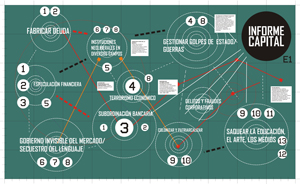
Informe Capital



Other charts to download
--------------------------------------------------------------------
Articles:
http://www.valf.com.mx/archiv/14jun/museos_artistas.html
http://www.losinrocks.com/
http://www.ramona.org.ar/
http://artforum.com/
http://esferapublica.org/nfblog/?p=59624
http://verrev.wordpress.com/
----------------------------------------------------------------- |